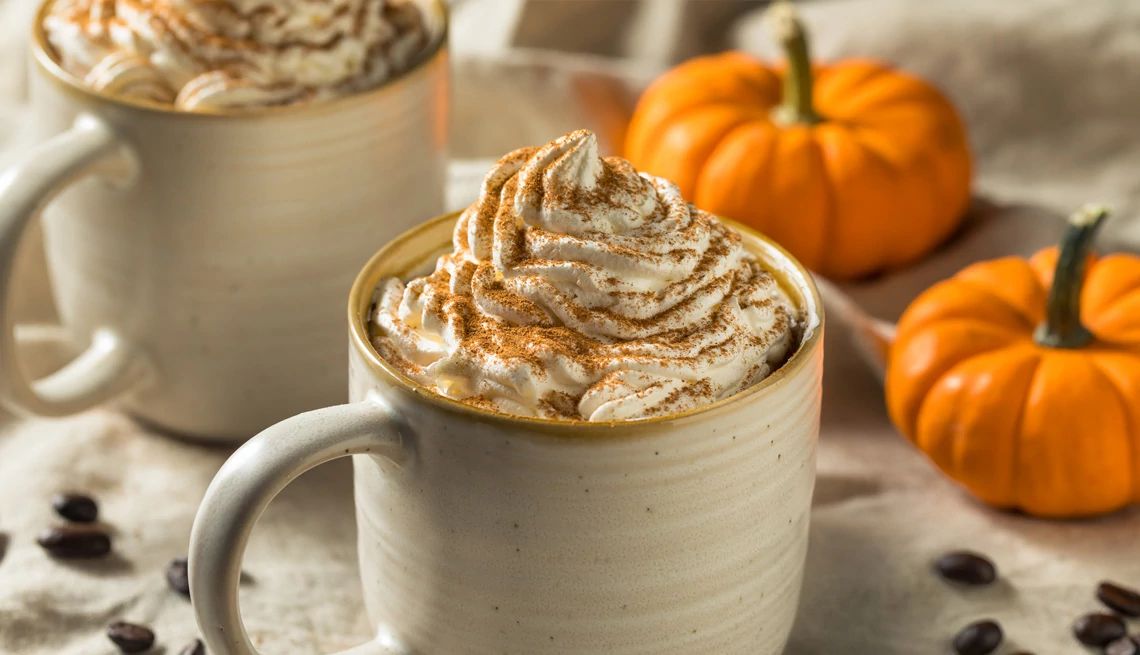AARP Hearing Center


Some call it fall, others call it autumn. And then there are those for whom this time of year is known as none other than pumpkin spice season.
Thanks to Starbucks, which introduced its Pumpkin Spice Latte in 2003, the cinnamon-accented beverage has grown from a drink to a movement. Brands have churned out pumpkin spice cat litter, cough drops and deodorant. There are pumpkin spice cookies, lip balms and T-shirts.
Most people aren’t sick of it yet. In fact, 62 percent of respondents to a 2023 survey of 1,000 Americans said that pumpkin spice was neither overrated nor underrated — that its pervasiveness was “just right.” But when you take the original drink’s nutritional content into account, some health experts might disagree.
“Once in a while, have one with your friends,” or enjoy it annually, says Cindy Silver, a registered dietitian in Winston-Salem, North Carolina. “But other than that, on a regular basis, it can in essence dilute your nutrition, because you’re getting a lot of calories. But they’re not what I would call healthy calories.”
Here’s what’s actually in pumpkin spice lattes, the potential health consequences of drinking them too frequently, and what dietitians recommend ordering — or doing — instead. As Bonnie Taub-Dix, a New York–based registered dietitian and host of the Media Savvy with Bonnie Taub-Dix podcast, puts it, “There are lots of other ways that you could welcome the fall.”
Nutritional costs
A traditional medium (or “grande”) pumpkin spice latte from Starbucks contains 2 percent milk, a proprietary pumpkin spice sauce (which contains sugar, condensed milk and pumpkin puree, among other flavorings and colorings), espresso, whipped cream, and a sprinkle of cinnamon, ginger, nutmeg and cloves.
It clocks in at 390 calories, with 14 grams of fat and 50 grams of sugar. That’s equivalent to three pats of butter and 12.5 teaspoons of sugar. “Could you picture having a cup of coffee and opening 12.5 packets of sugar?” says Taub-Dix, creator of the BetterThanDieting.com blog and author of Read It Before You Eat It: Taking You From Label to Table.































































You Might Also Like
Do We Really Need Whole-Body Deodorant?
We applied these new sticks, sprays and creams from neck to toe to see if they passed the sniff test25 Great Ways to Curb Sugar Cravings
Simple tips for cutting back on the sweet stuff8 Major Health Risks for People 50 and Older
A look at the top killers — and how to dodge themRecommended for You